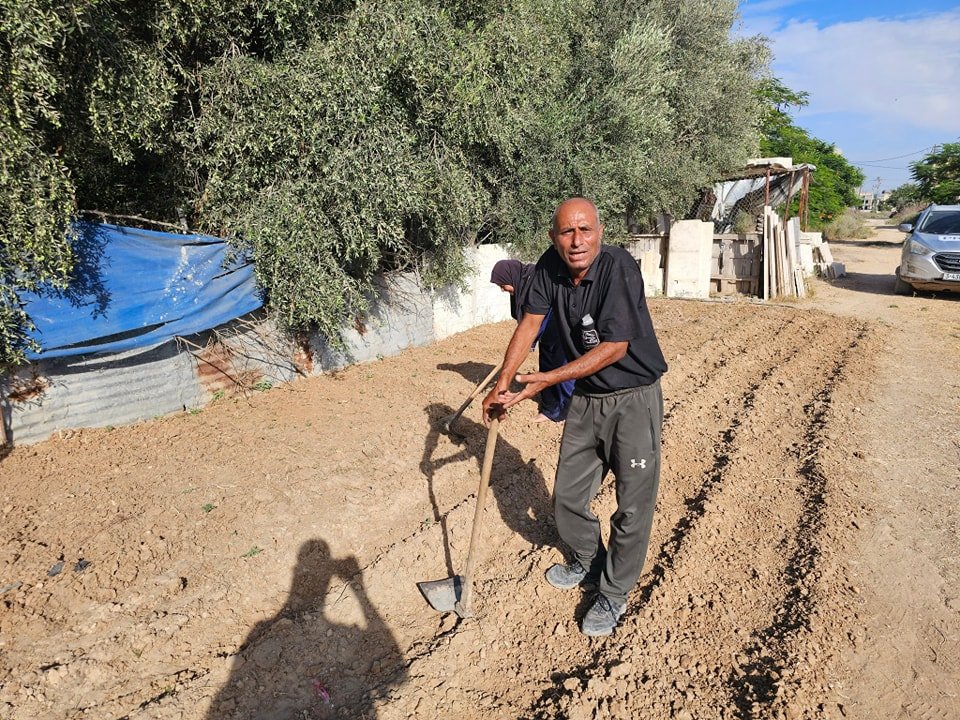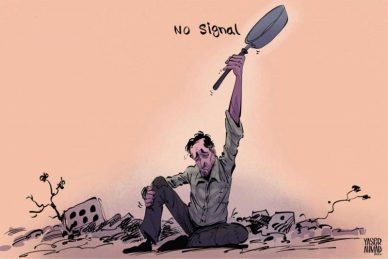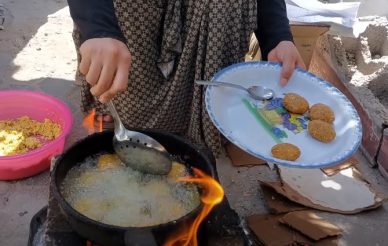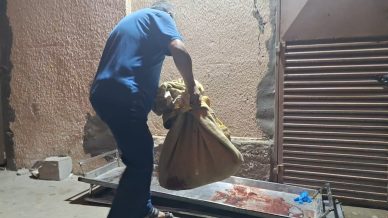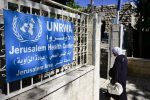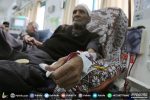GAZA, (PIC)
Citizen Mohammed Abu Tair (45 years old) did not wait long to head to his land after hearing about the withdrawal of the Israeli occupation army from the al-Zanna area east of Khan Yunis to check on it.
The Palestinian’s love for his land is unparalleled, and Abu Tair is a living example of this affection. He risks his life as he goes to inspect his land for the scars of the brutal Israeli aggression. He tells our reporter, “The land is in my blood; I cherish it like a spoiled child. I love it with a love that surpasses any lover’s love for their beloved.”
He continues that his agricultural land covers 20 dunums, which he cultivates with wheat and vegetables. He began, from the very first moments of the occupation’s withdrawal, to rehabilitate whatever he could, despite the extensive damage. The occupation has destroyed the land and is trying to subjugate the Gaza residents and deprive them of vegetable and fruit resources.
Abu Tair emphasizes that through farming, Palestinians confront starvation and siege. It is his weapon for survival, return, and self-determination, despite the ongoing genocide for the past 11 months.
Abu Tair was displaced from his area due to several incursions and moved to the Mawsi area of Khan Yunis. He says, “When I left the land in al-Zanna, I left out of fear for the children, but my love for the land is greater than this fear, and my love for it may cost me my blood.”
He points out that he decided to rehabilitate the land, defying the occupation and its genocide. This rehabilitation unequivocally confirms his love for this land, and through farming, he roots his steadfastness and survival.
Confronting famine
In another part of northern Gaza, where Israel is attempting to kill the region through starvation and siege, farmer Mohammed al-Kafarna is trying to restore what he can of his agricultural land that was uprooted by Israeli machinery at the beginning of the aggression.
Al-Kafarna said, “Despite death and destruction, and the policy of targeting, we returned to Beit Hanoun to revive the land and remain here, defying the criminal occupier, in an effort to confront starvation and siege.”
After many hardships during the displacement journey forced upon Al-Kafarna’s family in the early hours of the genocide that began on October 7, 2023, they made a bold and strong decision to return to their home and land in Beit Hanoun, which was one of the first points of advance during the Israeli ground invasion.
Mohammed Al-Kafarna’s family refuses the idea of relocating from northern Gaza to the south. He says, “We will not leave our land, even if we are buried in it. I want to die here.”
The idea of rehabilitating and re-cultivating the land was very challenging, yet Mohammed al-Kafarna saw it as an opportunity for defiance and to assert his will. The occupation is trying to kill them through starvation and siege, and he decided to confront this by rehabilitating his land, which spans 150 dunums.
He remarks, “The idea of rehabilitation is extremely difficult under the siege and total prohibition; it’s like carving into stone, but I decided to continue regardless.”
Farming in the midst of war is a message of life. Al-Kafarna says, “Replanting the land assures us that we will rebuild the entire country. The color green brings us happiness, and surely this ordeal will pass.”
Al-Kafarna does not hide his fears of the occupation returning to destroy his land after it has been rehabilitated, yet this has not deterred him. He is determined to farm and bring life back to the land, despite the scarcity of resources and necessary materials.
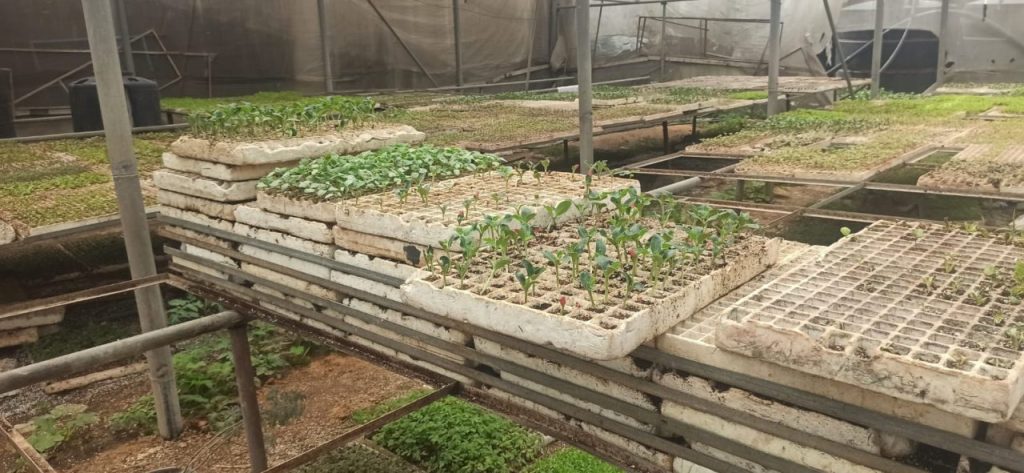
Most agricultural land in Gaza is out of service
The Euro-Med Human Rights Monitor estimates that the occupation army has rendered 75% of the total agricultural land in the Gaza Strip out of service during the past months since the outbreak of the war.
The majority of agricultural land is concentrated in areas adjacent to the Israeli security fence in the eastern and northern parts of the Gaza Strip, where farmers have been unable to access their lands since the outbreak of the war due to the danger, in addition to direct targeting of other areas through shelling and leveling.
Engineer Mohammed Abu Awda, spokesperson for the Ministry of Agriculture in Gaza, said in a press release that approximately 500 dunums have been rehabilitated in northern Gaza recently and planted with vegetables, along with areas of land cultivated with fruit trees that farmers have preserved.
These areas provide the scarce quantities of vegetables and fruits in the markets, but at exorbitant prices and low quality due to “the unfavorable conditions in agricultural production.” For example, a kilogram of green peppers costs 400 shekels (about 110 dollars), and a kilogram of eggplant is sold for around 80 shekels (about 22 dollars).
The ministry official noted that youth or individual initiatives often drive the rehabilitation of agricultural land in northern Gaza, supported by organizations aimed at reviving agricultural production. However, he mentioned that the areas are still not large enough to alleviate the famine.
To confront the real famine affecting the people of northern Gaza, hundreds of families have started engaging in home gardening, despite lacking any experience in this field, driven solely by the will to challenge difficult circumstances.
Citizen Mahmoud Abu Al-Ata (70 years old) from the town of al-Faluja in northern Gaza, told our reporter, “Here in the northern Gaza Strip, we are deprived of vegetables and fruits; we are dying of hunger and rely solely on canned food. From here, the idea of home gardening came to mind to confront this painful reality.”
He added that he planted a small amount of tomatoes and cucumbers to help sustain his family, achieving some success. This idea has become widely adopted in northern Gaza, expressing a determination to live.

